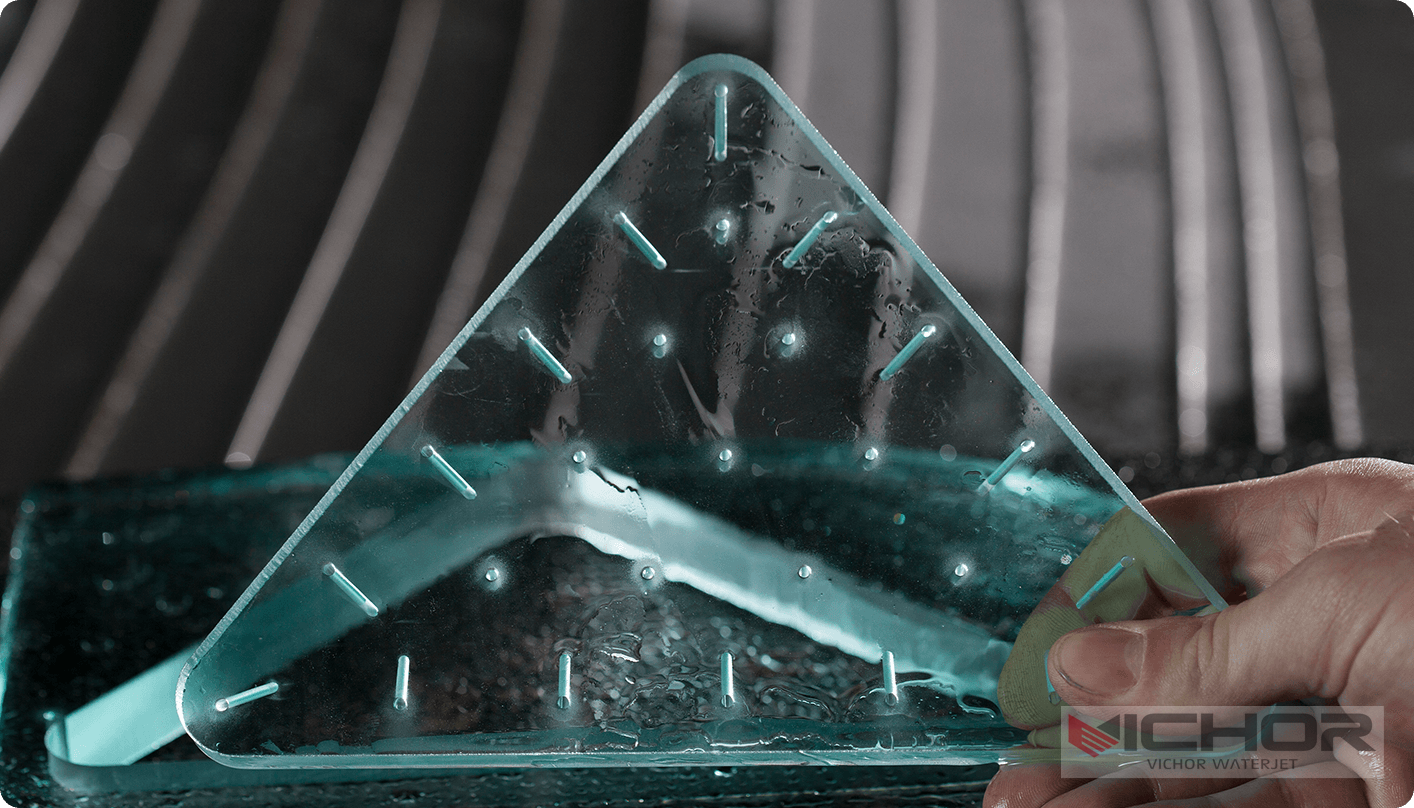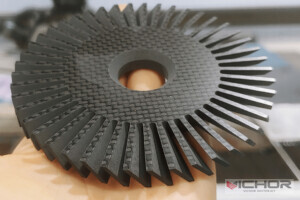
Waterjet Rubber: The Unsung Hero of Precision Cutting Performance
In the high-stakes world of precision manufacturing, where tolerances are measured in thousandths of an inch and material integrity is paramount, waterjet cutting reigns supreme. But behind the raw power of the pressurized water stream lies a critical, often overlooked component: waterjet rubber. This specialized material isn’t just padding; it’s an engineered solution fundamental to achieving the accuracy, quality, and efficiency waterjet technology promises. This article dives deep into the essential role of waterjet rubber, exploring its properties, functions, types, advantages, and best practices for maximizing cutting performance.
1. Understanding Waterjet Rubber: Material Properties and Composition
Waterjet rubber isn’t your average floor mat or gasket material. It’s specifically formulated to withstand the extreme environment within a waterjet cutting tank and directly under the cutting head. Let’s break down its key characteristics:
High-Density Resilience: The core requirement is exceptional resilience under high, localized pressure. The rubber must compress significantly under the intense force of the plunging waterjet stream (which can exceed 60,000 PSI) but rebound almost instantly to support the workpiece and prevent “bounce-back” vibrations that ruin cuts. High-density natural rubber or synthetic compounds like neoprene are common choices.
Exceptional Abrasion Resistance: Even though the primary cutting happens above it, the rubber is constantly bombarded by abrasive garnet particles ricocheting at high velocity and by the high-speed water slurry. Superior abrasion resistance is non-negotiable to prevent rapid degradation and the creation of debris that could contaminate the workpiece or damage the machine.
Water and Chemical Resistance: Operating submerged in water, often mixed with abrasive garnet and potentially exposed to cutting fluids or materials leaching from the workpiece, waterjet rubber must be highly resistant to water absorption, swelling, and degradation from common industrial chemicals. This ensures dimensional stability and longevity.
Shock Absorption: Beyond supporting the workpiece, the rubber acts as a critical shock absorber. It dampens the immense kinetic energy of the waterjet stream upon impact, protecting the machine’s structure (especially the tank floor and supports) from excessive vibration and potential damage over time. This also contributes significantly to cutting quietness.
Durability and Longevity: Given the harsh operating conditions, a long service life is essential for cost-effectiveness and minimizing machine downtime for replacement. Quality waterjet rubber is engineered to endure millions of impacts before needing replacement.
2. The Critical Functions of Waterjet Rubber in the Cutting Process
The placement of waterjet rubber – typically as a sacrificial top layer on the cutting grid or directly on a slat table – is strategic and serves multiple vital functions:
Workpiece Support and Stabilization: This is the primary role. The rubber provides a conforming, non-slip surface that holds the material firmly in place during cutting. This prevents shifting, vibration, or lifting (“flutter”) caused by the high-pressure jet, which is crucial for achieving precise cuts, especially on thin or flexible materials. Without this stable base, cuts become jagged, inaccurate, and prone to taper.
Minimizing Exit Damage (Striation): As the waterjet stream exits the bottom of the workpiece, it retains significant energy. Striking a hard surface (like a metal slat) causes this energy to reflect upwards, damaging the underside of the cut edge, creating rough striations, and potentially delaminating composites. The waterjet rubber absorbs this exit energy, drastically reducing or eliminating this back-splashing effect, resulting in a cleaner, smoother bottom edge finish.
Reducing Noise and Vibration: The impact of the waterjet stream on a hard surface generates tremendous noise and vibration. The compliant nature of waterjet rubber absorbs a significant portion of this impact energy, making the cutting process noticeably quieter and reducing stress transmitted through the machine frame, benefiting both operators and equipment longevity.
Protecting Cutting Components: By absorbing the jet’s energy upon exit, the rubber also protects the expensive cutting table slats or grids underneath from being rapidly eroded or dented by the abrasive slurry. It acts as the first line of defense.
Containing Slurry Splash: While not a perfect seal, the rubber layer helps contain the abrasive water slurry within the immediate cutting zone, reducing overall mess and splash within the tank compared to cutting directly onto open slats.
3. Types and Forms of Waterjet Rubber
Waterjet rubber comes in various forms to suit different machine configurations and cutting needs:
Rubber-Topped Slats: The most common solution. These are metal slats (usually aluminum or steel) with a thick layer (often 1/2″ to 1″ or more) of high-quality waterjet rubber securely bonded to the top surface. The rubber takes the impact, while the metal slat provides structural support across the tank width.
Solid Rubber Slats: Less common, these are slats made entirely from a very dense, durable rubber compound. They offer excellent shock absorption but may lack the rigidity of metal-backed slats for very heavy workpieces.
Rubber Mats/Sheets: Large sheets of waterjet rubber can be placed directly on top of existing slat tables or grids. This is often a more economical option for retrofitting or protecting grids, but the rubber may need additional securing to prevent shifting. Thickness is critical.
Specialized Rubber Inserts: For intricate fixtures or specialized holding applications, custom-cut waterjet rubber inserts can be used to support specific part geometries or protect delicate features.
The choice depends on factors like machine type, typical workpiece thickness and weight, desired cut quality, and budget.
4. Advantages of Using High-Quality Waterjet Rubber
Investing in purpose-built, high-grade waterjet rubber delivers tangible benefits throughout the cutting operation:
Superior Cut Quality: The most significant advantage. By stabilizing the workpiece and absorbing exit energy, high-quality rubber virtually eliminates bottom-edge striations and taper, producing parts with clean, smooth edges top and bottom. This is critical for precision components, aesthetic parts, and assemblies requiring tight tolerances.
Enhanced Precision and Accuracy: Reduced vibration and workpiece movement translate directly into better dimensional accuracy and repeatability. Parts cut consistently match the programmed path.
Increased Productivity: Cleaner cuts often reduce or eliminate secondary finishing operations like sanding or deburring the bottom edge. Reduced machine vibration also contributes to smoother operation and potentially faster cutting speeds with maintained quality. Less downtime for slat replacement is another productivity boost.
Extended Machine Component Life: By protecting the underlying slats or grid from erosion and damage, waterjet rubber significantly extends their lifespan, reducing replacement costs and machine downtime.
Reduced Operating Noise: A more pleasant and compliant working environment for operators is a direct result of the rubber’s sound-dampening properties.
Versatility: Quality waterjet rubber effectively supports and protects a vast range of materials, from delicate foils and thin metals to thick composites and stone, enhancing the waterjet’s inherent versatility.
5. Selecting, Maintaining, and Optimizing Waterjet Rubber Performance
Getting the most out of your waterjet rubber requires careful selection and proper maintenance:
Selection Criteria:
Thickness: Match thickness to your typical material thickness. Thicker workpieces generally require thicker rubber (e.g., 1″ or more) to ensure adequate support and energy absorption. Thinner materials can use thinner rubber (e.g., 1/2″).
Density/Shore Hardness: Higher density/harder rubber (e.g., Shore A 70-90) offers better support for heavier materials but may mark softer workpieces. Softer rubber provides more cushioning but may wear faster. Discuss needs with your supplier.
Material Composition: Ensure it’s specifically designed for waterjet use, offering high abrasion resistance, water resistance, and durability. Natural rubber, neoprene, and specialized synthetics are common.
Bonding Quality (for topped slats): The bond between rubber and metal must be exceptional to prevent delamination under constant impact.
Installation: Ensure rubber-topped slats or mats are installed flat, level, and securely. Any gaps or unevenness can cause workpiece movement or uneven wear.
Rotation and Flipping: Strategically rotate and flip rubber-topped slats regularly. The center areas directly under the common cutting paths wear fastest. Moving slats and flipping them (if double-sided) distributes wear evenly, maximizing the lifespan of your waterjet rubber investment.
Cleaning: Periodically clean the rubber surface to remove embedded abrasive particles, metal fines, or debris that can mar workpiece surfaces. Follow manufacturer recommendations for cleaning agents.
Timely Replacement: Don’t wait until the rubber is completely destroyed. Once significant wear, deep grooves, or chunks missing appear in high-traffic areas, or if cut quality on the bottom edge noticeably degrades, it’s time to replace the affected slats or mats. Using worn-out rubber sacrifices cut quality and risks damaging workpieces or underlying slats.
Cutting Parameters: While the rubber helps, optimizing piercing height, cutting speed, and abrasive flow rate for the specific material also minimizes excessive jet dwell time on the rubber, extending its life.
Waterjet rubber is far more than simple tank lining; it’s a precision-engineered component critical to unlocking the full potential of waterjet cutting technology. Its role in stabilizing workpieces, absorbing destructive exit energy, protecting machine components, and ensuring exceptional cut quality bottom-side cannot be overstated. Understanding its properties, functions, and the importance of selecting high-quality material and maintaining it properly is essential for any waterjet operation striving for peak performance, efficiency, and the highest quality results. Investing in the right waterjet rubber and its care is an investment in the precision, productivity, and profitability of your waterjet cutting process. It truly is the unsung hero holding up the standards of precision manufacturing, one clean cut at a time.
continue reading
Related Posts
- 1371 words6.9 min read
- 1449 words7.3 min read



